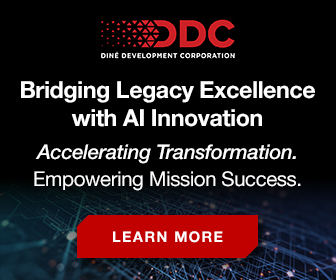What if the same strategy that boosts business performance could also shrink your company’s carbon footprint? According to new data from Rubin Worldwide’s 2025 Technology Economics Report, leading companies are doing just that. In the report, Dr. Rubin shares his Technology Asset Class Optimization model – a data-driven approach to identifying the hybrid IT environments most consistently tied to Best-in-Class business performance. Its detailed analysis provides clear evidence that leading companies invest in predictable ratios of technology platforms and that those decisions correlate directly with business success.
Now, with the addition of new sustainability metrics to the research in the updated report, the case for strategic technology optimization is even stronger.
The Original Insight: Platform Balance Matters
The research examines 2,400 leading companies and reveals something instructive: top performers across industry sectors use significantly more cloud and mainframe compute in their overall IT environments compared to average performers. The analysis looks at business performance through the lens of factors such as topline revenue, operating margin, infrastructure economic efficiency, availability/uptime, and DORA metrics. What it finds is that, on average, organizations that demonstrate the strongest performance across these measures have 10 percent more cloud and 10 percent more mainframe in their hybrid IT mix.
This isn’t just coincidence. The data shows these organizations are strategically placing workloads on platforms where they perform best, treating cloud, mainframe, and distributed servers as distinct “asset classes” with different strengths and characteristics.
New Dimension: Environmental Sustainability Performance
The updated 2025 report includes expanded analysis that examines how technology platform selection affects environmental sustainability performance. The results are striking and add another dimension to the value of technology optimization.
Using Average Carbon Footprint per Transaction (measured in tonnes of CO2e per year) as a benchmark, Dr. Rubin analyzed companies across multiple industries and size categories. The analysis encompasses various carbon production factors, including energy usage, cooling requirements, server utilization, and physical infrastructure footprint.
The expanded research demonstrates that the same IT optimization principles that align with superior business performance deliver potential for impressive environmental sustainability benefits as well. Specifically, the analysis reveals:
- Organizations following the Technology Asset Class Optimization model achieve significantly lower average carbon footprints per transaction
- This sustainability advantage holds true across companies of all sizes – small ($1B-$2B), medium ($20B-$100B), and large (>$100B)
- While larger organizations naturally benefit from economies of scale, the principles of technology optimization tend to translate into lower carbon footprints regardless of company size
- Among organizations without fully optimized technology environments, those with mainframe-heavy profiles generally outperformed cloud-heavy profiles on carbon footprint metrics
Why This Matters Now
Environmental accountability has become a business imperative. Companies increasingly face requirements to report carbon emissions. Technology decisions have direct implications for meeting these sustainability obligations. Fortunately, the same strategies that improve operational efficiency can also lead to enhanced sustainability outcomes. This is why it is so critical to adopt a strategic approach to IT platform selection, one that enables you to run the right workloads on the right platforms.
My Takeaway
IT platform investment strategies don’t require choosing between business performance and sustainability goals—you can advance both simultaneously.
By treating their technology platforms as a portfolio that requires ongoing optimization rather than a collection of separate systems, many of the organizations I work with have improved their operational metrics while solidly positioning themselves for future environmental reporting requirements. The Technology Asset Class Optimization model has proven to be more than just an interesting academic framework. It provides practical guidance for organizations seeking to maximize the return from their technology investments across all dimensions of performance, including sustainability. For IT leaders navigating increasing environmental expectations, this research offers a roadmap that aligns technical, financial, and sustainability objectives. It’s well worth a read!









0 Comments